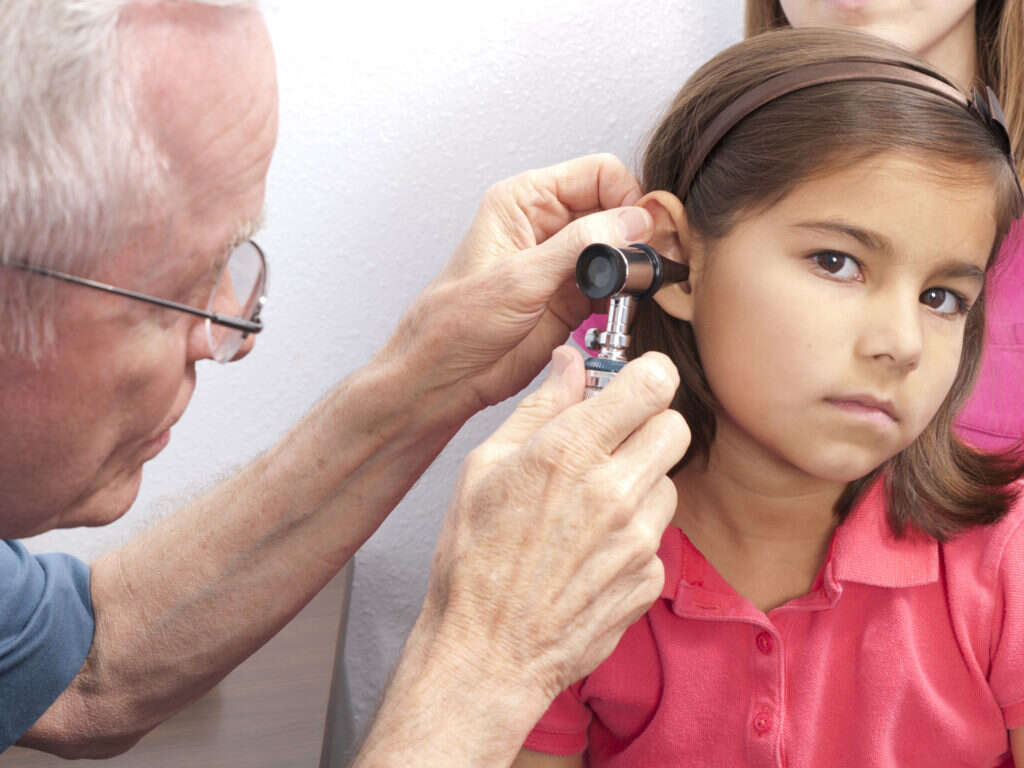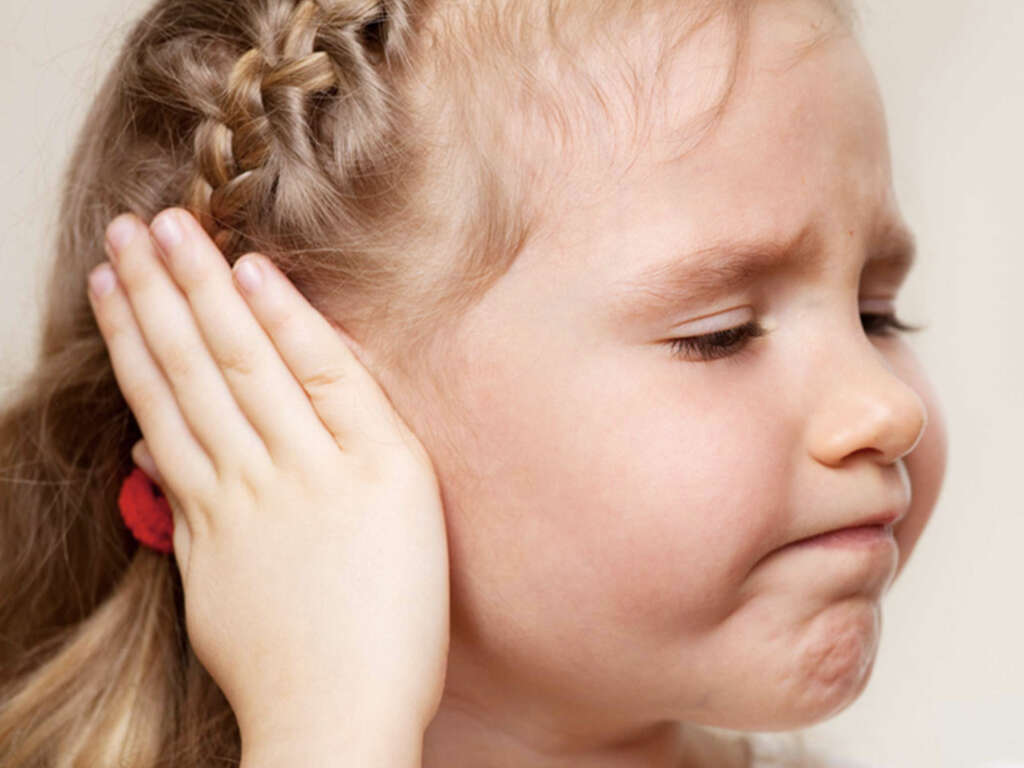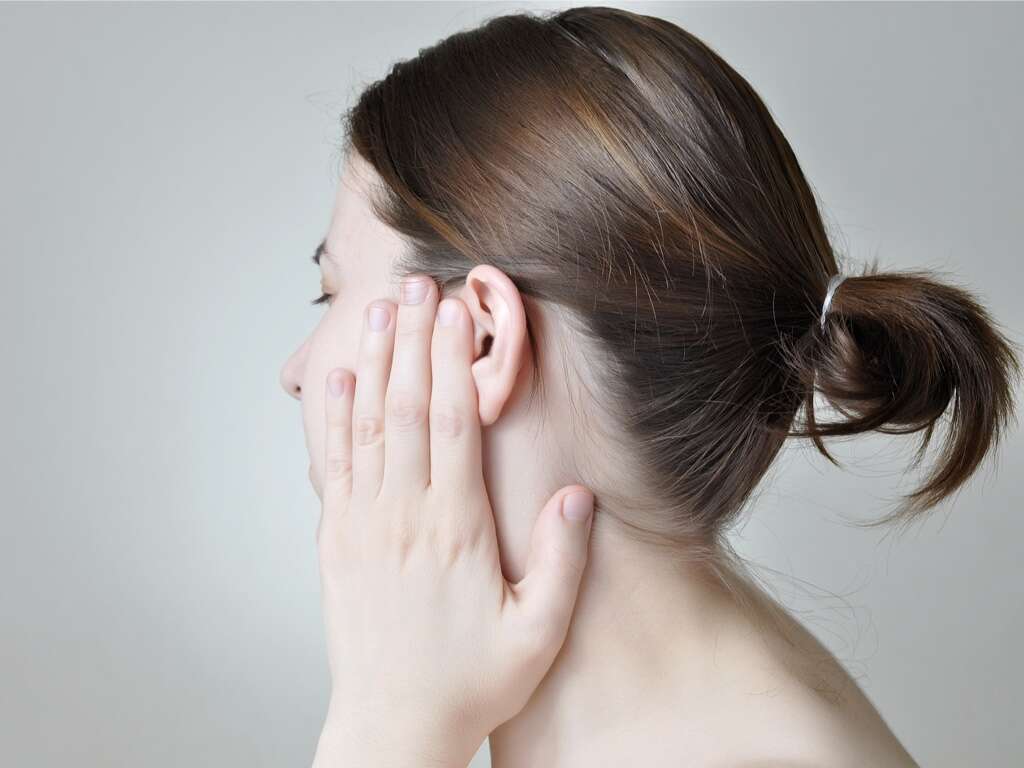10 Symptoms of Ear Infections
Acute ear infections of the middle ear are medically known as acute otitis media and can involve many symptoms. They are typically caused by a bacterial infection that makes its way into the middle ear space. It is characterized by the presence of infected middle ear fluid and inflammation of the mucosa of the middle ear. In children, the most common bacterial causes are Streptococcus pneumoniae, Haemophilus influenzae, and Moraxella catarrhalis. Acute otitis media is primarily a pediatric infection and is the most common pediatric infection for which antibiotics are prescribed in the US. The majority of cases occur in children ages 6 to 24 months.
The middle ear is an area behind the eardrum. It contains a lot of the bones that make up the structure of the ear and allow us to hear. If an infection develops in this part of the ear, one will experience a number of symptoms that might require medical attention.
Some infections clear up quite quickly, but others may remain for a long while. Acute otitis media generally responds rapidly to antimicrobial therapy. If you have experienced symptoms or are caring for a child who seems to be suffering from an infection, it’s important to seek medical treatment.

Symptom #1: Ear Aches
This is the most obvious sign of an ear infection, and the one that’s most commonly reported. The pain associated with ear infections is also known as otalgia, and is associated with a dull, throbbing ache in the middle of the ear. Pain can arise sporadically or can be continuous, with sparks of severe pain in between.
The pain may become more intense depending on the position that the person is currently in. It’s generally noted that pain is more intense when a person is lying down, particularly if the ear that’s infected is facing downwards. Children may exhibit the symptom when the affected ear or the nearby hair is pulled.
An earache is usually the first symptom that allows people to recognize that they have an ear infection. However, it is not an exclusive symptom of this disease. When it is not accompanied by hearing loss or fever in adults, possible causes can include external otitis, dental abscess, or pain that originates from the joint that gives movement to the jaw (temporomandibular joint).

Symptom #2: Ears Feel Full
Feeling like your ears are full, or a feeling of pressure in the internal ear, is another common symptom of an ear infection. The feeling might be similar to the one that you experience when you’re on an airplane and your ears pop. This sensation can be experienced in patients who have otitis media with effusion or the presence of a thick fluid behind the eardrum in the middle ear. This can be attributed to an incomplete resolution of the infection (common sequelae in children) and can persist from weeks to months. Another cause of this symptom is the partial obstruction of the eustachian tube without infection, leading to fluid buildup in the middle ear and possible infection. The Eustachian tube connects the middle ear to the back of the throat and helps drain fluid from that ear space. Possible causes for its partial obstruction include allergies, inflammatory processes in the nasopharynx, adenoids that are enlarged (hypertrophic) or benign or malignant tumors.
Some people find this sensation much more irritating than others, whereas other people can cope with it easily. If this symptom has persisted for longer than a day, it might be worth considering medical attention to see if you have a more serious infection.

Symptom #3: Hearing Difficulty
Another common symptom of ear infection is difficulty hearing. This can occur because of the added pressure in the ear, which tends to indicate some sort of inflammation or obstruction that can physically impede a person’s hearing.
Infections can cause a buildup of pressure inside the ear. This can lead to the eardrum becoming pressurized, which can alter various sounds and make it harder to hear things.
Generally, hearing loss related to an ear infection is quite mild. If you experience any of these symptoms, you should seek medical attention.

Symptom #4: Ringing Ears (Tinnitus)
Tinnitus is a condition understood as a subjective ringing noise in the ears, usually very high pitched. It is a common symptom of an ear infection. The mechanism that produces this symptom remains poorly understood. Sometimes people hear something more akin to a long, slow beeping noise.
There is not necessarily going to be a trigger for the ringing of the ears. Many people report that it occurs randomly.

Symptom #5: Discharge
Discharge through the ear or otorrhea typically occurs when the ear infection is more serious. In this case, the middle ear Might become inflamed, and the inner ear might fill up with fluid.
This fluid needs somewhere to go, so that means that most likely it’s going to leak out your ear when it has a chance. If the tympanic membrane (eardrum) of the patient spontaneously ruptures, it will likely be accompanied by a mucus-like discharge from their ears (purulent otorrhea). The patient might also report sudden relief of pain.
Furthermore, eardrum rupture can be associated with transient hearing loss. Usually, it will heal spontaneously within 2 months.

Symptom #6: Nausea or Vomiting
A lot of ear infections are caused by some type of pathogen. If the immune response to the microorganism spreads beyond the ear, then it’s possible that patients can exhibit gastrointestinal symptoms as well.
Nausea, vomiting and diarrhea are common gastrointestinal symptoms associated to acute otitis media. These occur more often in children.
On the other hand, as a result of a viral infections (generally following upper respiratory involvement), otitis media may also involve the inner ear. This condition, known as labyrinthitis, interferes with the functions of the vestibular system. This organ senses changes in the position of the head, updating the brain accordingly, and allows us to maintain balance in the different positions that the body can take. The symptoms associated with labyrinthitis are vertigo and loss of balance, which inevitably result in nausea and vomiting.

Symptom #7: Fever
This is another symptom that can occur if the infection or bacteria makes it beyond the ear. Usually, fevers associated with ear infections aren’t very high, and usually come with additional symptoms like chills or shivering. It is estimated that of children with acute otitis media, two thirds have a history of fever.
However, in cases of more serious ear infections, the temperature of the body can reach 40°C. This is uncommon and may represent bacteremia (presence of bacteria in the circulating blood) or other complications.

Symptom #8: Headaches
A lot of people with ear infections end up experiencing headaches of various severity during their infection. The headaches can vary in type, as well: some might be dull and throbbing, whereas others might be sharp and acute.
The headaches don’t tend to be very serious during mild infections, but if you’re experiencing a persistent headache (for more than a day) or an extremely painful headache, in addition to other symptoms, this could be a sign of a more serious infection.
Children and babies tend to have a harder time dealing with headaches related to ear infections because they can’t really identify where the pain is coming from.

Symptom #9: Colds
The ear is closely connected to the nose, the throat, and other parts of the respiratory system. When one part is infected, the other parts become more vulnerable. Recent symptoms of upper respiratory infection are not an uncommon finding in the patient’s history. Also, concurrent symptoms, such as cough, sinus congestion or runny nose have been observed.
If you have an ear infection, you might actually Confuse it as part of a common cold if it’s not identified quickly.
Usually, the symptoms of a cold will go away on their own. However, ear infections, depending on the cause may require adequate antimicrobial therapy.

Symptom #10: Irritability
Although it is not a specific symptom, irritability includes long episodes of crying or fussiness despite attempts at comforting the infant. It is not specific to any illness, but parents usually identify that something is wrong with the child. Irritability might be a sign that the infant is ill or in pain.
Irritability can be the only early symptom of acute otitis media in a young infant. It is generally accompanied by sleeplessness. Irritability or feeding difficulties in the neonate, can be the only indication of a septic focus. If your child shows signs of irritability, be sure to consult with your pediatrician.












